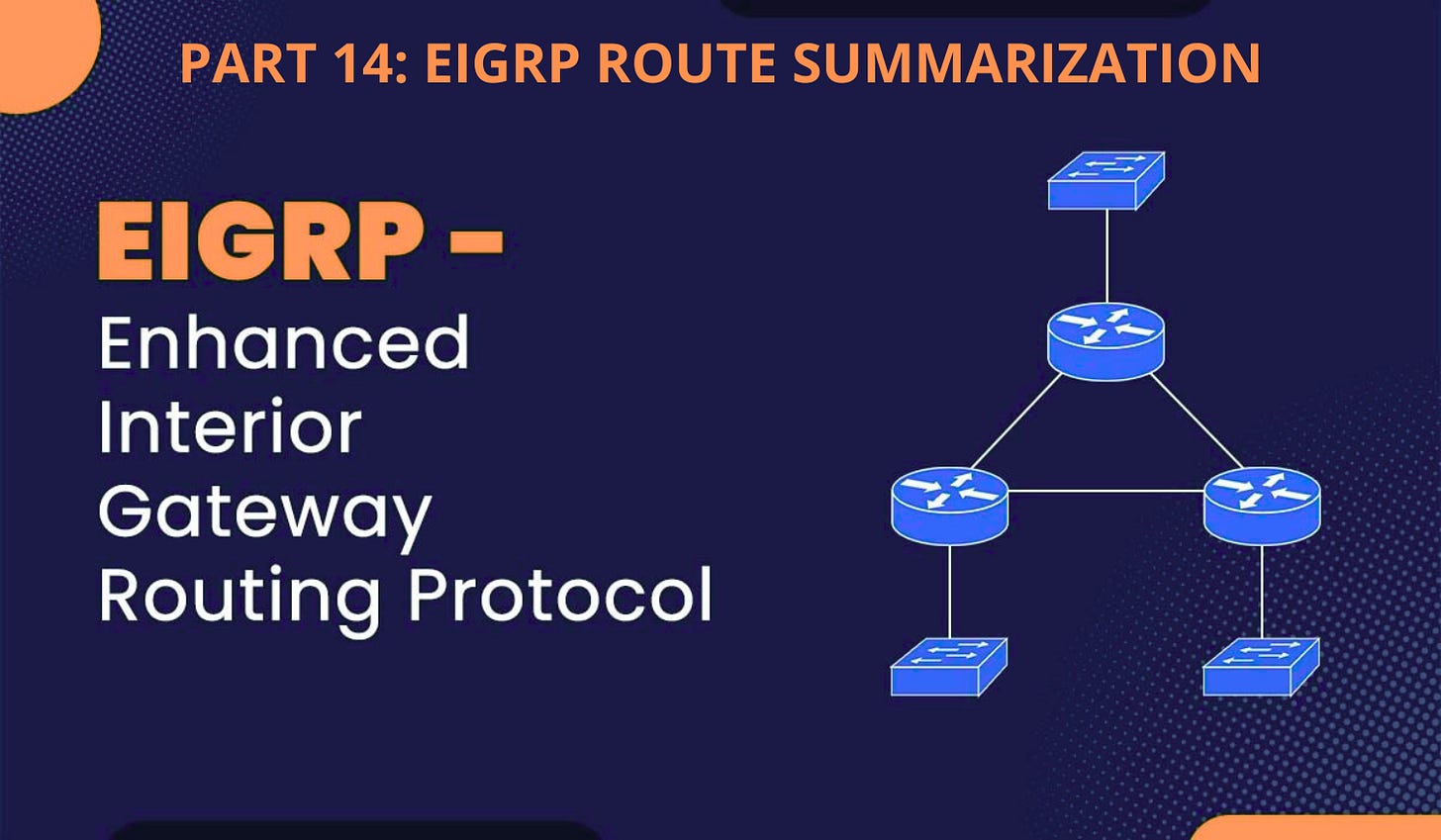PART 14: EIGRP Route Summarization
Enhanced Interior Gateway Routing Protocol
EIGRP supports two methods of route summarization:
Manual Summarization
Auto-summarization (legacy feature)
Manual Summarization
Concept and Configuration
Manual summarization allows you to create aggregate routes that consolidate multiple more-specific prefixes into a single advertisement.
Process:
Disable auto-summarization within the EIGRP process (if not already disabled)
Identify the interface from which you want to advertise the summary
Configure the summary address command on that interface
Configuration Syntax:
For IOS Classic Mode:
Router(config-if)# ip summary-address eigrp <AS-number> <summary-address> <subnet-mask> [leak-map <route-map-name>]For IOS Named Mode:
Router(config-router-af-interface)# summary-address <summary-address> <subnet-mask> [leak-map <route-map-name>]For IOS XR:
Router(config)# router eigrp <process-name>
Router(config-eigrp)# address-family {ipv4 | ipv6}
Router(config-eigrp-af)# interface <type> <number>
Router(config-eigrp-af-if)# summary-address <prefix>/<prefix-length> [leak-map <route-policy-name>]Effects of Manual Summarization:
The configured summary route is advertised to EIGRP neighbors
More specific routes covered by the summary are suppressed from advertisements
A discard route (pointing to Null0) is automatically created with an administrative distance of 5
The Null0 route acts as a loop prevention mechanism
When external EIGRP routes (AD 170) are summarized, they become internal routes (AD 90) on downstream routers
Advanced Features:
Leak Maps: Allow specific routes to be advertised alongside the summary route
Requires configuration of a route map to match the specific routes
Useful when you need exceptions to the summarization
Flexibility:
No restrictions on what can be summarized as long as the component routes exist in the routing table
Can summarize both internal and external EIGRP routes
Auto-Summarization
Concept and Behavior
Auto-summarization automatically summarizes routes to their classful boundaries when advertised across different major networks.
Key Points:
Disabled by default in newer IOS versions (enabled by default in older versions)
Only applies to locally originated routes that are:
Not redistributed from other routing protocols
Explicitly advertised via the network command in EIGRP configuration
Process Logic:
EIGRP examines locally connected routes advertised in the EIGRP process
Summarizes these routes to their classful boundaries (A:/8, B:/16, C:/24)
Creates a Null0 route for loop prevention
Determines advertisement eligibility:
If the outgoing interface's network differs from the summarized route's network → Advertise summary
If the outgoing interface's network matches the summarized route's network → Additional checks:
If summary mask is more specific than interface subnet mask → Do not advertise summary
If summary mask is less specific than interface subnet mask → Advertise summary
Limitations:
Not suitable for discontiguous networks: Can cause routing problems with non-contiguous subnets
Limited to classful boundaries only
Lacks the flexibility of manual summarization
Best Practices
Use manual summarization for more control and flexibility
Disable auto-summarization in production networks unless specifically needed
Create summary addresses that encompass all relevant prefixes to prevent routing loops
Use leak maps when specific routes must be advertised alongside summaries
Test summarization implementations thoroughly before deploying in production



